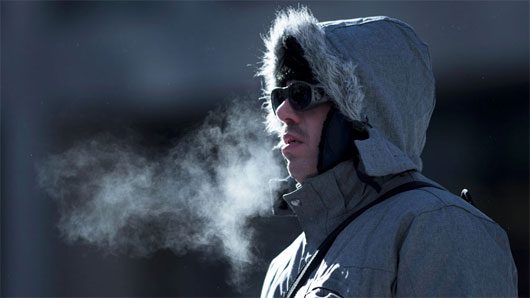To explain this phenomenon, let’s start with a simple experiment: continuously add salt to a glass of water and stir vigorously.

Image: cbc.ca
Initially, the salt added to the glass will dissolve completely; however, once a substantial amount of salt has been added, no matter how much you stir, the new salt will no longer dissolve. This phenomenon is known as saturation.
Air and water share this characteristic. The amount of water vapor that air can hold has a certain limit.
However, the capacity of cold air to hold water vapor is significantly less than that of warm air. Therefore, during the cold winter months, the moisture present in the air from human and animal respiration is no longer absorbed by the surrounding air; this moisture condenses into tiny water droplets and forms white fog when it encounters the cold.





















































